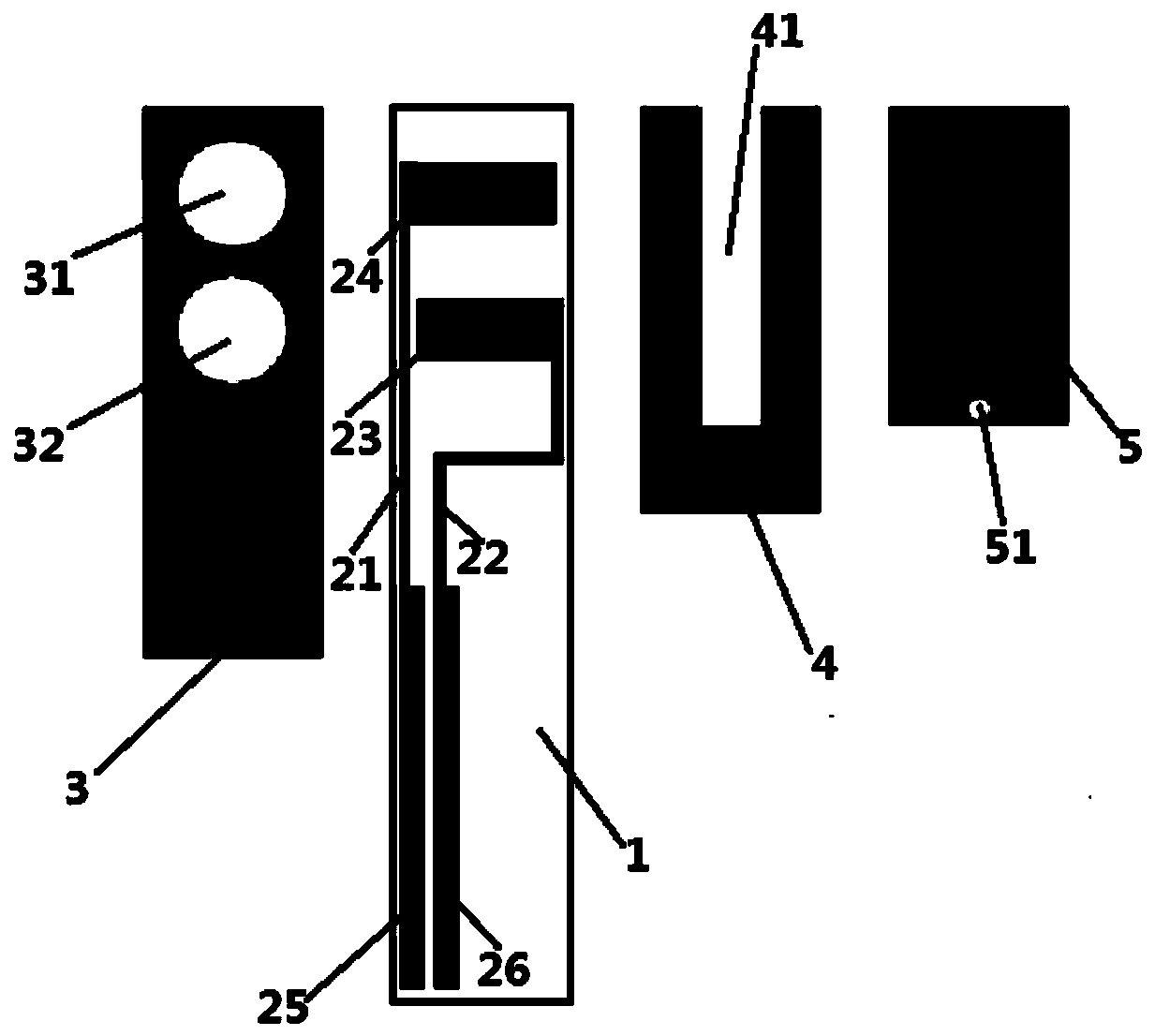Electric potential type biosensor and detection method
A biosensor, potentiometric technology, applied in biochemical equipment and methods, instruments, measuring devices, etc., can solve the problems of high cost of selective ionophore, complicated calculation method of urea concentration, and complicated structure of indicating electrode, etc. The effect of large-scale manufacturing, simple structure, and reduced inspection costs
- Summary
- Abstract
- Description
- Claims
- Application Information
AI Technical Summary
Problems solved by technology
Method used
Image
Examples
Embodiment 1
[0076] Embodiment 1 reaction reagent preparation
[0077] Prepare the second reaction reagent on the indicating electrode of the present invention and the first reaction reagent on the reference electrode, as follows:
[0078] The reaction reagent of the present invention: the second reaction reagent on the indicating electrode contains 0.05~0.5M PBS (pH6.0~7.5), trehalose 0.25%~1% (w / w), Triton X-100 0.1%~0.6% ( v / v), urease (2280~8712U / mL); the first reaction reagent on the reference electrode contains 0.05~0.5M PBS (pH6.0~7.5), Triton X-100 0.1%~0.6% (v / v ), trehalose 0.25% ~ 1% (w / w), ruthenium compound, potassium ferricyanide K 3 [Fe(CN) 6 ] or potassium ferrocyanide K 4 [Fe(CN) 6 ] 1.0 to 4.5% (w / w).
[0079] Reaction reagent 1 of the present invention: the second reaction reagent on the indicator electrode contains 0.1M PBS (pH 7.2), trehalose 1%, Triton X-100 1%, urease (4491.2U / ml); the first reaction reagent on the reference electrode The reaction reagent conta...
Embodiment 2
[0086] Embodiment 2: Detection of potential difference
[0087] use as figure 1 or figure 2 The potential type biosensor (here referred to as figure 2 The potential-type biosensor in the sample is used as an example) to detect blood samples, which can be selected from plasma, serum or whole blood. Here, whole blood samples are used as an example to illustrate, and the detailed steps are as follows:
[0088] (1) Insert the electrical connection end of the potential type biosensor into a detection instrument through the first contact and the second contact of the potential type biosensor (there are many types of the detection instrument, here for electrochemical In the electrical connector of the workstation Biologic VSP EC-Lab as an example);
[0089] (2) Select a variety of whole blood samples with different urea concentrations (here four different concentrations of 4.5mM, 14.5mM, 24.5mM and 41.5mM are used for illustration), without applying external voltage to the indic...
Embodiment 3
[0101] Example 3: Selecting an Electron Transporter
[0102] Let the electron carrier in the reaction reagent 1 of the present invention be replaced by potassium ferricyanide or potassium ferrocyanide respectively, when changing to potassium ferricyanide, the second reaction reagent on the indicator electrode and the first reaction reagent on the reference electrode Reaction reagent is as shown in the reaction reagent 2 of the present invention in embodiment 1; When changing to potassium ferrocyanide, the second reaction reagent on the indicator electrode and the first reaction reagent on the reference electrode are as in embodiment 1 Reagent 3 of the present invention is shown.
[0103] Select four kinds of whole blood samples with different urea concentrations (5.4mM, 17.5mM, 25.4mM and 31.8mM), and detect according to the potential difference detection method in Example 2, and each kind of whole blood samples with different urea concentrations is detected multiple times in ...
PUM
 Login to View More
Login to View More Abstract
Description
Claims
Application Information
 Login to View More
Login to View More - R&D
- Intellectual Property
- Life Sciences
- Materials
- Tech Scout
- Unparalleled Data Quality
- Higher Quality Content
- 60% Fewer Hallucinations
Browse by: Latest US Patents, China's latest patents, Technical Efficacy Thesaurus, Application Domain, Technology Topic, Popular Technical Reports.
© 2025 PatSnap. All rights reserved.Legal|Privacy policy|Modern Slavery Act Transparency Statement|Sitemap|About US| Contact US: help@patsnap.com



